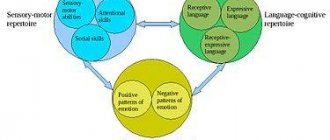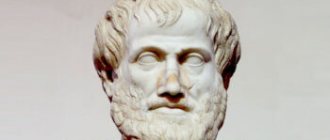The 20th century was rich in scientific discoveries in the field of psychology. Different directions and approaches to human research have tried in every possible way to answer the question of what humanity is. In the wake of the passion for positivism and the search for accurate research methods, the most popular psychological concept has long been considered behaviorism, which implied the idea that a person is always a creation of surrounding circumstances, and completely excluded the importance of consciousness and the internal characteristics of the individual.
It was in the spirit of behaviorism that the theory of operant conditioning was formulated by the American psychologist Burres Skinner, who argued: human behavior is determined and therefore predictable.
In this article we will take a closer look at Skinner's most prominent concept, which has been repeatedly criticized for manipulating human behavior, but at the same time its proponents have fruitfully used it to introduce new character traits.
Who is Skinner?
An outstanding American psychologist who lived in the 20th century. He made significant contributions to the development of behaviorism. He is best known for his theory of operant conditioning. In addition to his achievements in psychology, Burres Skinner was an excellent inventor. One of the scientist’s inventions is a box named after him - the Skinner box. This design is intended to explore the principles of operant conditioning.
Skinner pioneered the work of functional analysis. It was he who proposed it as a method for studying behavior.
It is known that in 1958 the famous psychologist was awarded the prize “For Outstanding Contribution to the Development of Science.” And this award was presented by the American Psychological Association. It was noted that few American psychologists were able to make such a significant contribution to the development of psychology.
In 1972, the same Association recognized Burres Frederick Skinner as the most outstanding psychologist of the 20th century. The second place at that time was taken by S. Freud.
The famous psychologist has hundreds of articles and several dozen scientific books to his credit.
Skinner's theory of behaviorism is a breakthrough in the science of psychology. And it will be discussed below.
Criticism of Skinner and his scientific contributions to the development of psychology
Despite the widespread approval of Skinner's scientific contributions by behaviorists, many famous psychologists - Erich Fromm, Noam Chomsky, Steven Pinker - did not agree with his position. They criticized Skinner for neglecting human feelings, cognitive abilities and the role of human drives. Therefore, Skinner’s “psychology” for Fromm, for example, was the science of manipulating human behavior.
However, despite the sharp criticism, Skinner's scientific results also bore a lot of fruit. It is not for nothing that in 1972 the American Psychological Association included Skinner among the most outstanding psychologists of the twentieth century. His ideas and observations have been repeatedly confirmed in various fields of application, where the most successful areas have been teaching communication skills, training confidence skills, self-control, and treating anxiety, migraines, hypertension and muscle tension.
By the way, about forming useful habits. If you want to understand how you can effectively cope with stress, anxiety and fears, pay attention to our online program “Mental Self-Regulation”. With its help, in 6 weeks you can learn effective ways to maintain mental clarity and cope with difficult situations at work, at university and in personal relationships.
As for Skinner's operant conditioning, there are many ways to approach it, and it's a personal choice. But I still want to believe that a person is not just animal material, guided only by reactions, but a conscious being, capable of always and everywhere relying on reason, making thoughtful decisions and acting in the best possible way.
We wish you success and look forward to your lessons!
We also recommend reading:
- Storytelling
- Behaviorism: basic principles, representatives and directions
- A Brief History of Psychology: From Antiquity to the Present Day
- Situationism in psychology and human behavior
- The emergence of positivism
- Wundt's method of studying psychology
- The Rosenthal effect or how to wisely lead a team
- Criticism of positivism: briefly about the main anti-positivist concepts
- Applied behavior analysis: from stimuli to responses
- Abraham Maslow "Motivation and Personality" - summary
- Psycholinguistics as a tool for in-depth study of speech and language
Key words:1Psychoregulation
Operant behavior
Skinner's operant behaviorism, or operant behavior, is any action aimed at achieving a specific goal. It is influenced by antecedents and consequences.
Thus, the theory of operant conditioning is as follows: a learning process based on the actions of antecedents and consequences.
Consequences shape operant behavior. And therefore, its frequency increases or decreases in the future.
Antecedent factors influence the manifestation of behavior in the present tense.
Briefly about Skinner's behaviorism: the formation of operant behavior occurs as a result of “operating with consequences.” That is, certain conditions are created in the environment.
Cognitive behaviorism by E. Tolman
Edward Tolman is an American psychologist, a representative of neobehaviorism, the author of the concept of “cognitive maps” and the creator of cognitive behaviorism.
He rejected E. Thorndike's law of effect, believing that reward (encouragement) has a weak effect on learning. Instead, E. Tolman proposed cognitive learning theory , suggesting that repeated performance of the same task strengthens the connections created between environmental factors and the organism's expectations.
Tolman proposed that behavior is a function of five major independent variables: environmental stimuli, psychological drives, heredity, prior learning, and age.
He believed that the behaviorist model of SR should be expanded. In his opinion, the formula of behavior should consist not of two, but of three members, and therefore look like this: stimulus (independent variable) - intermediate variables (organism) - dependent variable (reaction), i.e. SOR .
Intermediate variables are everything that is associated with the body (O) and forms a given behavioral response to a given irritation. Thus, the middle link is mental moments inaccessible to direct observation (for example, expectations, attitudes, knowledge, etc.). An example of an intervening variable would be hunger, which cannot be observed in the test subject (animal or human). Nevertheless, hunger can be objectively and accurately related to experimental variables, such as the length of time during which the body did not receive food.
Tolman conducted experiments on rats looking for a way out of a maze. The main conclusion from these experiments was that, based on the behavior of animals strictly controlled by the experimenter and objectively observed by him, it can be reliably established that this behavior is controlled not by the stimuli that are acting on them at the moment, but by special internal regulators.
Behavior is preceded by a kind of expectations, hypotheses, cognitive (cognitive) “maps” . A cognitive map is a subjective picture that has spatial coordinates, in which individual perceived objects are localized. The animal builds these “maps” itself. They guide him in the labyrinth. Using them, an animal thrown into a labyrinth learns where and how it needs to get.
The position that mental images serve as a regulator of action was substantiated by Gestalt theory. Taking this into account, Tolman developed his own theory, called cognitive behaviorism.
Creating conditions
These conditions, according to Skinner's behaviorism, are created through positive or negative reinforcements. Positive reinforcement strengthens the manifestation of a particular behavior in the future. Negative, on the contrary, extinguishes it.
For example, a child is constantly naughty in the store. Mom buys him a chocolate bar or a toy, the baby stops his whims. Chocolate is a positive reinforcement in this situation for the little capricious one. He has already developed a clear algorithm of behavior, and the child knows that if he starts a tantrum in the store, he will receive a kind of reinforcement for this.
Another example. A child throws a tantrum in a store. Mom ignores. The child screams even more, tries to fall on the floor and fight in hysterics. His mom spanks him hard and takes him out of the store without buying anything. The second time the baby again turns on this behavior system, and again receives a spanking. It is unlikely that he will want to be spanked for the third time. The child begins to behave calmly in the store, without trying to be capricious. And why? Because spanking is negative reinforcement. And the baby doesn’t like this method, so he will try to avoid it in the future.
Development of the direction and reasons for the transition to neobehaviorism
Later, behaviorism as a branch of psychology was developed by M. F. Meyer, who sought to bring psychology closer to physiology, and Meyer’s student A. P. Weiss, who considered his main goal to transform psychology into a natural science discipline. A significant contribution was also made by the work of Watson's follower C. S. Lashley, who conducted experiments to study the brain mechanisms of behavior. The research proceeded according to the following scenario: a reflex was formed in the animal, and then the scientist removed any part of the brain and checked whether the action of the previously developed reflex depended on it. Based on the results of these experiments, Lashley came to the conclusion that the brain functions as a whole and its various parts are equipotential, i.e., equivalent, and therefore can successfully replace each other. W. S. Hunter is famous for having discovered an experimental design in 1914 to study a reaction he called delayed. One of the experiments went like this: the monkey was shown which of two boxes contained a banana. Then a screen was placed between it and the boxes. A few seconds later the screen was removed. The monkey unerringly opened the box it needed, proving that animals are already capable of a delayed, and not just an immediate reaction to a stimulus.
However, already in the 30s, Watson's system of views was already criticized and the main provisions of behaviorism began to undergo significant changes. The reason for this phenomenon was the weakness of the categorical apparatus of direction. In particular, the category of action, which was studied to a limited extent in this program, could not be successfully studied under the condition of denying the image and motive that determine the very meaning of the action. Attempts to introduce the concepts of image, motive and psychosocial relationship into the system of concepts of behaviorism led to the formation of a new psychological direction - neobehaviorism.
Behavior reinforcement
The principle of behavior reinforcement is a process that occurs in the environment after a behavior has already been generated and expressed.
Reinforcement occurs immediately after the behavior occurs.
Positive reinforcement is the presentation of a stimulus after the behavior has been demonstrated. It leads to its strengthening in the future.
Negative reinforcement is a stimulus that is given immediately after a behavior has occurred and reduces its subsequent likelihood of occurring.
According to Skinner's operant behaviorism, negative reinforcement is liberating. Having received it once, a person will subsequently strive to free himself from the strengthening of the unpleasant stimulus.
Impact experiment
Despite the recognition of the theory, the revolutionary psychologist really wanted to improve his success and master practice. At the end of 1919, a married researcher, in the company of his assistant-mistress, decided to experiment with a child who was not even a year old. According to them, the healthy, harmoniously developed baby's name was Albert. He had to prove that reactions to stimuli are possible in animals and humans. This would allow experimenters to revolutionize psychology.
Later, however, Albert turned out to be Douglas. But this is not the only inaccuracy that experimenters made in an attempt to breathe life into a new direction of science. In fact, the baby was not a healthy child - he suffered from hydrocephalus. This terrible disease comes down to the fact that the mysterious thing the brain does not work as it should - there is too much fluid in the ventricular compartment. The disease is caused by a genetic abnormality or infectious diseases of the mother during pregnancy.
Let's get closer to the essence of the experiment. First, the boy was shown a live white rat and all sorts of objects that only partially resembled it: a beard, fur, cotton yarn. Of course, the child was not afraid.
In the second stage of the study, the baby played with a rat while the psychologist hit a steel band above his head with a hammer. Albert could not notice what was happening, so he was frightened by the sound. Just a few repetitions and the fear factor shifted to the innocent little rat. In addition, objects that the baby associated with a rat received such a reaction. So, the test subject was afraid of yarn, a rabbit or a gray beard.
Watson claimed that the reaction lasted for a month, but he could stop everything at any time. However, the baby was taken to the hospital - and the John-Rosalie couple did not trace his further fate.
It would seem a successful experiment. However, soon critics seriously doubted both the methodology and the results of its use to prove the viability of this direction. It turned out that the psychologist often repeated his “shock experience”, consolidating the effect, so the statement about the duration of the phobia was taken out of thin air. In addition, the experimenters knew exactly when the child would leave the medical facility.
In general, the experiment found the following disadvantages:
- lack of a specific plan and correct structure;
- the authors did not rely on objective research results, but on personal subjective interpretations;
- the ethics of the experiment remained a big, bold question mark.
The manipulation of facts and subjectivity alone would cost a researcher his career in the 21st century. But a century ago, the key problem was having an assistant with privileges for a married man. This affair cost him a position at the prestigious Johns Hopkins University. However, a couple of years later, John married Rosalie and lived with her for 15 years, until the death of his wife separated them.
Not a single institution of higher education agreed to make Watson their employee. Later in New York, he found employment in advertising while attending the New School for Social Research as a lecturer.
The fate of the experimental baby was traced only five years ago. To the disappointment of skeptics, he did not develop a strange phobia of small, white, furry objects as a result of trying to introduce a new scientific field to the world. The boy's fate turned out to be tragic - little Douglas died at the age of 6 years. This news was published in American Psychologist in 2012. In addition, according to the authors of the article, Watson knew about the boy’s condition and studied information about his health.
Be that as it may, the direction of behaviorism remains in the history of science. But in Watson's understanding it does not exist. Modern psychologists do not consider behavior the only criterion for formulating conclusions about a person.
Types of amplification processes
B. Skinner's behaviorism speaks of two types of these processes: direct and indirect. The first are processes that involve external environmental stimuli that have a direct impact on humans. They, in turn, are divided into:
- Positive - attention, sleep, food.
- Negative - avoiding an unpleasant person.
Direct processes are automatic. They, like mediocre ones, are divided into positive and negative.
Processes of weakening behavior
Skinner's behaviorism also includes weakening processes. What it is? It is a process of punishment or weakening that occurs after a behavior has occurred. And it leads to a weakening of unwanted behavior in the future.
These processes are divided into positive and negative.
Positive reduction is a process in which, following the occurrence of a behavior, an aversive stimulus is provided, resulting in a decrease and/or reduction in the behavior in the future.
Negative attenuation is the process of eliminating pleasurable stimuli after the presentation of an undesirable behavior, so that future occurrences of the behavior will be reduced or reduced.
Antecedent factors
One of the stages of Skinner's behaviorism includes various incentives and motivational operations.
Motivational operations increase or decrease the effectiveness of a particular stimulus to strengthen or weaken behavior. They are divided into stimulating and suppressing.
Incentives increase motivational value. This means that the likelihood of behavior occurring increases.
Suppressors, in turn, reduce the motivational value of the stimulus, reducing the likelihood of a particular behavior occurring.
Indications for behavioral therapy
Behavioral therapy shows good results in the treatment of simple phobias, sexual dysfunctions, stuttering, neuroses, obsessive disorders, migraines, primary sleep disorders and headaches caused by emotional tension. The main goal of this therapy is to change the patient's behavior. Behavioral therapy often results in improvement much earlier than other types of psychotherapy. Rapid improvement can occur even with mental disorders that have lasted for many years. These are alcohol addiction, phobias, eating disorders.
Application of behavioral therapy with the Mental Health Clinic
The Mental Health Clinic successfully uses behavioral psychotherapy using various techniques. One such technique is biofeedback (BFB), a part of non-drug therapy. The method is based on the principle of self-regulation of physiological functions of the body that are uncontrolled by consciousness. This is hardware auto-training, which allows the patient, through a special computer program, to master the skills of regulating his condition.
Do you need a consultation? We will help you! Call us
Incentives
They influence behavior due to past experiences. They can be divided into three options.
- A reinforcing consequence will occur after the behavior.
- There will be no aggravating effects.
- An unpleasant consequence will occur that will lead to weakened behavior in the future.
That is, the first option is a stimulating influence. A behavior will be more likely to occur because it has been reinforced in the past in the presence of a given stimulus.
The second option is suppressive influence. The behavior will not occur because in the past, when exposed to a given stimulus, an extinction process occurred.
The third option is prohibitive influence. The behavior will not occur because an aversive stimulus occurred in the past in the presence of the given stimulus, which weakened it.
Types of operant conditioning
Frederick Skinner divided the mechanism of reinforcement into three types:
- Reinforcement with rewards. Positive reinforcement of an action increases the likelihood that it will be repeated because the specific behavior led to positive consequences.
- Reinforcement through punishment. The body will try to avoid a certain action if it brings negative consequences.
- If an action has neither negative nor positive consequences, it disappears over time.
Positive reinforcement stimulates the body to engage in behavior reinforced by the reward. Punishment, on the contrary, reduces the likelihood of using the taught skill in the future.
Skinner's radical behaviorism
To understand what it is, you need to know its relationship to the theory of S. Freud. Skinner believed that he had made a colossal discovery that human behavior is largely determined by unconscious reasons. However, he fundamentally disagreed with Freud regarding his invention of the mental apparatus and accompanying processes to explain human behavior.
According to Skinner, behavioral processes have nothing to do with behavior. Mental links create only a problem for explaining behavior.
Skinner believed that a reflex is the concept of a relationship between a stimulus and a response to that stimulus. Thus, if the body receives reinforcement for its behavior, then it strengthens. The body remembers them, and accordingly, a certain type of behavior is learned and formed. If there is no reinforcement, then behavioral acts that are not supported by anything disappear from the body’s behavioral repertoire.
This can be called reflexive behavior or involuntary. Its main difference from the operant one is that the latter cannot be caused. It's voluntary. And reflex behavior is caused by one stimulus or another, no matter whether conditioned or unconditioned. This theory coincided with the opinion of the Russian scientist I. Pavlov.
Behaviorism in psychology
The date of birth of behaviorism (from the English behavior - behavior) is considered to be the publication in 1913 of J. Watson's “Psychology from the point of view of a behaviorist” in the scientific psychological journal “Psychological Review”.
Until behaviorism became a popular trend in psychology, the method of introspection , the essence of which was the subject’s observation of processes in his mind. But this method has ceased to be in demand. Behaviorists in their teaching rejected the idea of consciousness, and also believed that any psychological structures and processes that are not observable by objective methods either do not exist (since their existence cannot be proven) or are inaccessible for scientific research. Therefore, critics of this paradigm often call behaviorism the "empty organism" theory . Naturally, with such a view, introspection was not considered an effective and reliable method.
Representatives of the behaviorist movement in psychology believed that the behavior of each person is determined not by some internal processes, but by the mechanical influences of the environment. Moreover, this process occurs according to the “stimulus-response” principle (S → R).
By reactions (R), behaviorists understand human movements (muscular, vascular, glandular reactions, etc.) performed when performing a particular action. Under stimuli (S) - irritations of the external world accessible to external observation, causing certain reactions in a person.
Let's look at this principle with an example. Let's say I'm walking around the city and we find a stray dog. To brighten up her fate, we give her a piece of cookie we have lying around. The dog immediately wagged its tail when it smelled the food. And she started salivating. In this case, the cookie we gave the dog is the stimulus (S), and the salivation is the response to the stimulus (R). It turns out that the dog's behavior (salivation) was caused by the influence of the external environment (cookies), and not by internal processes. This means that the dog’s reaction is a consequence of influence from the external environment (S →R).
Studying this phenomenon, behaviorists came to another conclusion. If there is a relationship between a stimulus and a reaction, then, knowing the reasons for this connection and having studied what stimuli cause certain reactions, you can achieve a certain behavior from a person or animal by influencing them in a certain way (i.e. there must be a certain stimulus that will give the appropriate reaction). In this case, there is no need to pay attention to the internal mental state of people.
The subject of psychology , from the point of view of behaviorism, is behavior, understood as a set of observable muscular, vascular, glandular reactions (R) to external stimuli (S). The task of psychology is to identify patterns of connections between stimuli and reactions (S → R), and the goal is to predict and control the subject’s behavior.
This direction studies only externally observable behavior, and reduces all mental phenomena to reactions of the body. Behaviorists view human and animal behavior as similar, believing that there are no differences between them.
Despite all the achievements of behavioral psychologists, this direction has been criticized . Doubts were raised regarding the rejection of the inner world of a person, i.e. consciousness, sensory and mental experiences; interpretation of behavior as a set of responses to stimuli that lowered a person to the level of a robot; inability to explain bright creative achievements in science and art, etc.
Human control
Education in the concept of behaviorism by B. Skinner is based on the fact that a person’s personality is a set of physical reactions that arise in the presence of previous factors and consequences.
Human behavior is shaped by reinforcements. Most often, based on the positive. It can also be formed under the influence of negative reinforcement.
Knowing this, human behavior can be controlled based on:
- Positive reinforcement of correct reactions. This contributes to their consolidation in the behavior of the individual.
- Subjective value of reinforcement. That is, based on what is most stimulating for a given individual.
- Operant conditioning. The individual knows that his behavior may be followed by negative reinforcement. To avoid negative consequences, a person is quite capable of abandoning a particular type of behavior.
- Subjective probability of consequences. If a person realizes that the likelihood of negative reinforcement arising from his actions is small, he is willing to take risks.
- Imitation. People tend to unconsciously imitate those whom they consider their authority.
- Personality type. It is much easier to manage those who are inclined to shift responsibility for their actions and actions onto other people and life circumstances. This type of personality is called externals. Internals, on the contrary, take full responsibility for what happens to them only on themselves.
Who stood at the origins of psychology
You can ask almost any psychologist what direction of psychology it all began with, and most will almost certainly say that it is Freudian psychoanalysis. Practical psychology began with psychoanalysis - a set of specific methods designed not only to explain what consciousness is and why a person behaves in one way or another, but to provide help to those people who perceived their internal state as a problem - experienced suffering or psychological discomfort.
Today, practical psychology has long gone beyond the scope of psychoanalysis and includes a huge number of methods, and the work of a psychologist is much more often associated not with the work of a scientist, but with actions to provide psychological assistance to clients based on these various methods. Most of them, in one way or another, arose on the basis of the ideas of psychoanalysis, were founded by people who grew up within the framework of the psychoanalytic school or, at least, had a direct connection to this method.
This is not surprising, because almost any of today’s areas of psychotherapy, one way or another, operates with such terms as the ego and the unconscious, that is, it uses the ideas of Sigmund Freud. For this reason, we put psychoanalysis in the first place when we talk about psychology.
However, if we are to talk about the origins of psychology, we must definitely remember about another direction that was extremely popular in the 20-40s in America, which was based on ideas very distant from the views of psychoanalysis on personality and its methods of working with patients.
In fairness, it should also be mentioned that if we talk about psychology as a strict scientific discipline, then it is the direction that will be discussed below that can rightfully claim this role.
Beyond freedom and dignity
When talking about Skinner, it’s hard not to mention this book. It overturns all the previous values and ideals of an ordinary person. The author clearly and clearly sets out how people can be managed. What is money, for example? Are they a benefit to people or a way to influence the crowd? Or how to force a person to work? It is enough to pay him a monthly salary in such an amount that it is enough only for food. This technique has been known since the times of Ancient Rome, where people worked for food. Now its role is played by rustling pieces of paper.
What is the value of human life, and most importantly, how can you reconsider your own views and decide to change your usual way of life? Berres Frederick Skinner gives specific and very clear answers to these questions in his book. For those who want to change something in their life, it will be an excellent impetus to action.
Operant behavior theory
B.F. Skinner (1904-1990), without exaggeration, he can be called the central, cult figure of the behavioristic movement. According to some scientists, he is the most outstanding American psychologist of the 20th century.
In his youth, Skinner was interested in various sciences, and his interests, as a rule, arose spontaneously, not subject to any plans. He modeled, played a variety of instruments, and kept a variety of animals (snakes, turtles, toads, lizards, and chipmunks) at home.
At Hamilton College, where Skinner specialized in English literature, he avidly read D. Joyce, M. Proust, F. Bacon, I. Pavlov at the same time, organized practical jokes for the teaching staff and dreamed of becoming a writer. But writing did not bring him satisfaction, and Skinner turned to science.
Thanks to B. Russell, he became acquainted with behaviorism and at the end of 1927 he entered Harvard to study psychology. However, his subsequent scientific activity was distinguished by spontaneity and extreme diversity.
He was equally enthusiastic and productive about the problems of linguistics, the invention of guided missiles, the development of the foundations of instrumental behavior and programmed learning.
Skinner graduated from Harvard University, defending his doctoral dissertation in 1931. Over the next five years, he worked at Harvard Medical School, researching the nervous system of animals.
His scientific interests were greatly influenced by the works of the founder of behaviorism, Watson, and the work of I. Pavlov on the formation and study of conditioned reflexes.
After several years of work at the universities of Minnesota and Indiana, Skinner became a professor at Harvard University and worked there for the rest of his life. He also became a member of the National Academy of Sciences, and his work became world famous.
However, Skinner's initial desire to become a writer led Skinner to the idea of connecting his two basic needs - in science and in art, which was realized in the novel Walden 2, written by him in 1949, in which he described a utopian society based on the principles he developed training.
In an effort to rework classical behaviorism, Skinner proceeded primarily from the need for a systematic approach to understanding human behavior. At the same time, he considered it necessary to exclude from the study all the fictions that psychologists resort to to explain what they do not understand.
Skinner includes many concepts of personality psychology, such as selfhood, autonomy, freedom, and creativity, among such fictions. From his point of view, it is impossible to talk about the real freedom of a person, since he never really controls his behavior, which is determined by the external environment.
In his book “The Behavior of the Organism” (1938), he argued that the inability to identify causal connections between mental phenomena and environmental influences dictates the need not to explain, but rather to describe the organism-environment system.
Skinner sought to understand the causes of behavior and learn how to control it. In this regard, he fully shared the views developed by Watson and Thorndike on the sociogenetic nature of mental development, i.e. proceeded from the fact that development is learning, which is determined by external stimuli.
However, Skinner moved from making statements to developing methods of targeted training and behavior management, and therefore he remained in psychology primarily as a learning theorist who developed various training and behavior correction programs.
His methods are outlined in the works “Science and Human Behavior” (1953), “Teaching Technology” (1968).
Based on the idea that not only skills, but also knowledge are variations in behavior, Skinner developed its special type - operant behavior. In principle, he proceeded from the fact that the human psyche is based on reflexes of various kinds and varying degrees of complexity.
However, comparing his approach to the formation of reflexes with the approach of I. Pavlov, he emphasized the significant differences between them.
He called the conditioned reflex formed in Pavlov's experiments stimulus behavior, since it is associated with the association between different stimuli and does not depend on the subject's own activity.
So, the dog is always given meat when called, regardless of what he is doing at that moment. Thus, an association arises between the meat and the bell, in response to which salivation is observed.
However, Skinner emphasized, such a reaction is quickly formed, but also quickly disappears without reinforcement; it cannot be the basis of the subject’s constant behavior.
In contrast to this approach, with operant learning, it is not the stimulus that is reinforced, but the behavior, the operations that the subject performs at the moment and which lead to the desired result.
Of great importance is the fact that a complex reaction is divided into a number of simple ones, following each other and leading to the desired goal. Thus, when teaching a pigeon a complex reaction - leaving a cage by pressing a lever with its beak, Skinner reinforced every movement of the pigeon in the right direction, ensuring that this complex operation was carried out without error.
This approach to forming the desired reaction had great advantages compared to the traditional one. First of all, this behavior was much more stable; it died out very slowly even in the absence of reinforcement.
Skinner drew attention to the fact that even one-time reinforcement can have a significant effect, since it establishes, albeit random, a connection between the response and the appearance of the stimulus.
If the stimulus was significant for the individual, he will try to repeat the response that brought him success. Skinner called this behavior superstitious, pointing out its significant prevalence.
Equally important is the fact that learning with operant conditioning is faster and easier. This is due to the fact that the experimenter has the opportunity to observe not only the final result (product), but also the process of performing the action (after all, it is decomposed into components implemented in a given sequence).
In fact, there is an exteriorization (transition to the external plane) of not only execution, but also orientation and control of the action. After all, by reinforcing the correct action with the right stimulus, the teacher demonstrates to the child what elements of the situation he needs to pay attention to, as well as what and in what order to do with them.
In other words, children are given a scheme of orientation and a scheme of action, and the teacher has the opportunity to observe the process of assimilation of these schemes. It is especially important that this approach is possible when teaching not only certain skills, but also knowledge.
The programmatic teaching method developed by Skinner made it possible to optimize the educational process and develop corrective programs for underachieving and mentally retarded children.
These programs had enormous advantages over traditional training programs, since they enabled the teacher to control and, if necessary, correct the process of solving a problem, and instantly notice the student’s mistake.
In addition, the efficiency and accuracy of execution increased the motivation of learning and the activity of students. Observing the solution process also made it possible to individualize the learning process depending on the rate of knowledge acquisition.
However, these programs also had a significant drawback, since exteriorization, which plays a positive role at the beginning of learning, inhibits the development of closed, mental actions. The constant need to repeat intermediate stages of solution long ago mastered by the student interferes with the internalization and curtailment of the problem solving scheme developed by the teacher.
This can at a certain stage reduce the motivation of students. In modern developmental programs, including those developed in our country, this drawback of Skinner's programmed training has been overcome.
In his book “Verbal Behavior” (1957), Skinner explained the development of speech by operant learning. He argued that human speech is a special - verbal form of behavior and, therefore, is subject to the same laws as its other forms.
In other words, the sounds we pronounce represent a type of reaction from the speaker, which is reinforced by the responses or facial expressions of the listener. In this case, the interlocutor can direct the speaker’s speech reactions by changing reinforcement.
Thus, a smile or approval can reinforce the use of a given word, while disagreement or punishment can slow down or force one to replace one word with another. This is how parents’ reactions help the development of children’s speech, certain forms of address, etc.
The famous American linguist N. Chomsky spoke out against the theory of verbal behavior. Denying the identification of language with behavior, he put forward his theory, the key concept of which was the idea of generative grammar.
By studying how a person is able to produce and understand unique grammatical structures, Chomsky came to the conclusion that a person has a certain pre-experimental language acquisition mechanism that determines the process of speech formation.
This explains the fact that children all over the world acquire language at the same speed, going through similar sequences of stages.
Productive from the point of view of linguistics, Chomsky's concept had a significant drawback that made it similar to Skinner's position - ignoring the cultural determinant leading to the development of language. Although Skinner's theory has not received widespread scientific acceptance, it has been partially used in language teaching, especially in schools for mentally retarded children.
In subsequent years, Skinner turned to the problem of human socialization and studied the possibility of teaching “normative behavior.” The behavioral therapy method he developed is also based on learning by trial and error.
However, Skinner was based not only on the ideas of the operant approach, but also on the views of Freud. He was convinced that Freud's main discovery was not guilt complexes, but the persistence of behavior patterns learned in childhood. The books “Beyond Freedom and Dignity” (1971) and “Reflections on Behaviorism and Society” (1978) are devoted to presenting the scientist’s position on these issues.
If Skinner's programs for teaching children were met with enthusiasm and became widespread, then his approach to behavior programming and the so-called token programs, which were developed to correct deviant behavior (in juvenile delinquents, mentally ill people), were subject to justified criticism.
First of all, we were talking about the inadmissibility of total control over behavior, without which the use of these programs is impossible, since we are talking about constant positive reinforcement of desirable behavior and negative reinforcement (or ignoring) of unwanted behavior.
In addition, the question arose about the reward for a certain number of collected tokens and especially about the punishment for their insufficient number.
The problem was that such punishment should be quite effective, i.e. is significant for the child, but at the same time, the basic rights of children should not be violated and their basic needs should not be frustrated.
However, despite these shortcomings, Skinner's approach provided a real opportunity to adjust and direct the learning process, the process of forming new forms of behavior.
He had a huge influence on psychology, and in modern American psychology Skinner is one of the most authoritative scientists, surpassing even Freud in terms of the number of citations and supporters.
At the same time: his theory of operant behavior had the greatest influence on practice, allowing him to reconsider the learning process and develop new approaches and new training programs.








